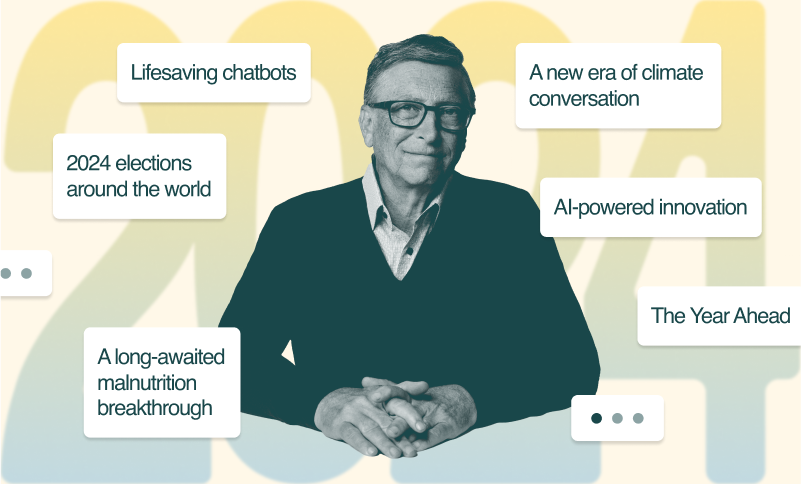By 2019, something remarkable had happened—what I consider to be one of the most important things humanity has ever achieved: In under three decades, child mortality was cut by more than half.
Over the past several years, I’ve been making the case that we have to eliminate global carbon emissions. To avoid the worst effects of climate change, we need new zero-carbon ways to generate electricity, grow food, make things, move around, and keep warm and cool.
But knowing what we need to accomplish is very different from knowing how to do it—or even whether we can.
Do we have everything we need to deliver enough affordable electricity for the world, or do we need more innovation? What about things like clean fuels, steel, and cement—are they viable options yet? In short, which clean sources are effective enough and cheap enough now, and which ones aren’t yet?
Understanding the answers to these questions will help us make sure we’re putting our best minds and resources on the toughest problems in climate and energy. In my view it boils down to one issue: What is the difference in cost between a product that involves emitting carbon and an alternative that doesn’t? This difference in cost is what I call the Green Premium, and understanding it is key to making progress on climate change. (It is also a central idea in my book about climate change, which will come out in February.)
Here’s an example of a Green Premium: The average retail price for a gallon of jet fuel in the United States over the past few years has been around $2.22, while advanced biofuels for jets cost around $5.35 per gallon. The Green Premium is the difference between the two, which is $3.13, or an increase of more than 140 percent.
Since airlines would not be willing to pay more than twice as much to fuel their planes—and many customers would balk at the resulting increase in air fares—the Green Premium on biofuels suggests that we need to find ways to either make them cheaper or make jet fuel more expensive. Or a combination of the two.
Unfortunately, calculating Green Premiums is not an exact science. It involves making assumptions about the cost of emerging technologies, for example, that well-informed people can disagree about. It is also important to note that one reason the Green Premiums exist is that the prices of fossil fuels don’t factor in the damage they inflict by making the planet warmer. In many cases, clean alternatives appear more expensive because fossil fuels are artificially cheap.
So even though Green Premiums are an imperfect measure, they are better than no measure at all.
For one thing, they help us measure our progress toward eliminating carbon emissions. The bigger a Green Premium is—especially for lower-income countries like India and Nigeria whose energy needs are growing—the further we are from a zero-carbon future.
They also serve as a guide to action. In cases where the Green Premiums are big, we know we need innovations that will close the price gap. In cases where they’re small—or where clean products are actually cheaper than the polluting version—it suggests that something other than the cost is keeping zero-carbon products from being deployed, and we need to understand why.
I’ll give you two examples that show why I find Green Premiums so useful.
First, electricity. The Green Premium for electricity amounts to the additional cost of getting all power in our grid from non-emitting sources like wind, solar, nuclear power, and fossil fuel plants equipped with carbon-capture technology. For the reasons I explained in this post, there’s a high Green Premium for electricity in most parts of the world, and we need innovation to drive it closer to zero.
But clean alternatives are within striking distance in the U.S. and Europe. One study suggested that decarbonizing Europe’s power grid by 90 to 95 percent would cause rates to go up roughly 14 euros per month for a typical household in the European Union. In the United States, it would cost an extra $18 a month for the average home. While that is still a substantial premium, especially for low-income people, it’s encouraging that Europeans and Americans may be able to generate most of their electricity carbon-free for the cost of a few cups of coffee each month.
Once we know what’s driving a given Green Premium, it acts like a roadmap—it tells us the route we need to take to get to zero. In the case of electricity, one step is to keep deploying renewables where they make sense. Another is to invest more in developing technologies like long-term electricity storage, carbon capture, and advanced nuclear. And we need to modernize and expand the grids that deliver clean electricity from where it’s generated to where it’s needed—often a distance of thousands of miles.
Electricity is a relatively straightforward case. A much more complicated one is manufacturing.
Consider the process of making cement. It’s responsible for releasing carbon dioxide in two ways: when fossil fuels are burned to generate heat for cement production, and during the chemical reactions involved in the manufacturing process.
We don't yet know how to make cement without releasing this carbon. The best we can do is to capture it once it has been released and stash it away permanently, a process that adds between 75 percent and 140 percent to the cost of cement. Few construction firms would be up for absorbing such a price increase in any competitive market.
Other Green Premiums in manufacturing—for steel, for example—are also quite high. This tells us that we don’t have the tools we need to make clean manufacturing anywhere near economical enough that everyone will adopt it. We need more innovation.
As a rule, there are three levers we can pull to reduce Green Premiums:
- Governments can use policies to either make the carbon-based version of something more expensive, or make the clean version cheaper—or, ideally, some of both. This could include requiring a certain amount of electricity or fuel to be generated in zero-carbon ways.
- Companies and investors can commit to buying and using cleaner alternatives, investing in research and development, supporting clean-energy entrepreneurs and startups, and advocating for helpful government policies.
- Individuals can help create markets for better, cleaner alternatives. When you buy an electric vehicle or a plant-based burger even though it costs more than the alternative, you’re saying to the companies that make these products: “There’s demand for these items. Make more and we’ll buy them.” That will drive investment in research, which helps decrease the price and ultimately makes clean products more affordable and available for everyone.
Not everyone can afford these premiums, but if you can, it’s a productive way to contribute.
I’m convinced that the Green Premium concept can bring clarity to a debate where it is badly needed right now. I hope more people embrace it and help improve the idea. Understanding the Green Premiums will help the world make the most of its efforts and funding as we work together to avoid a climate disaster.





